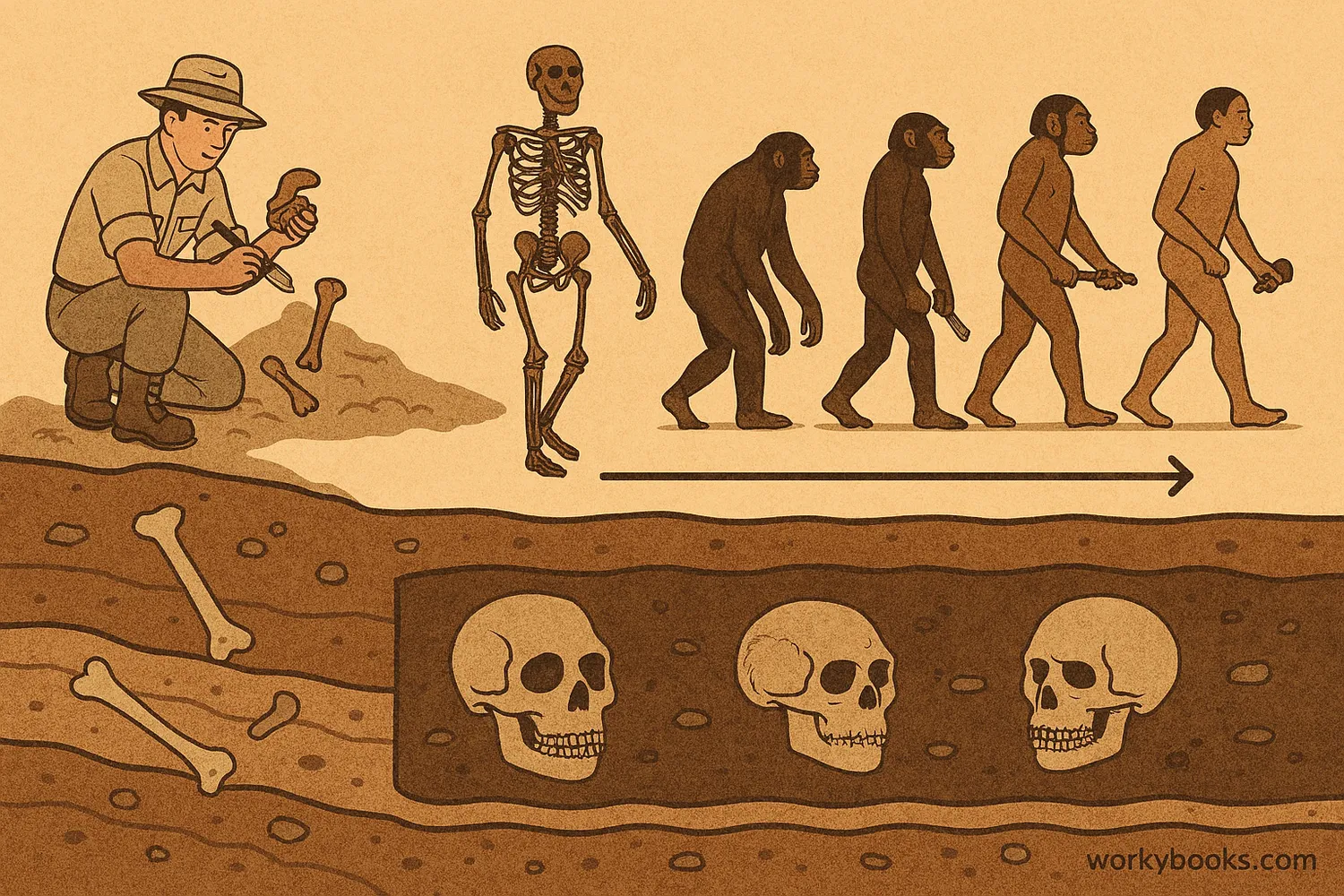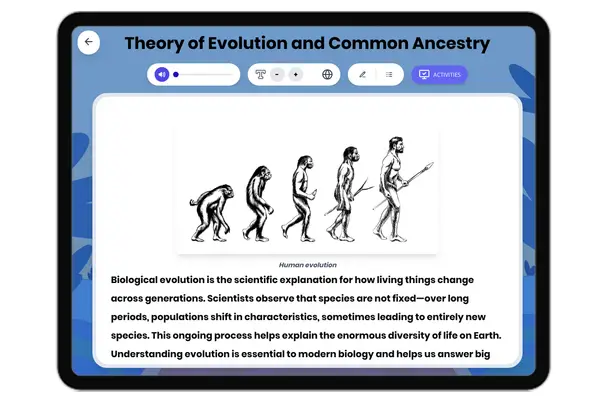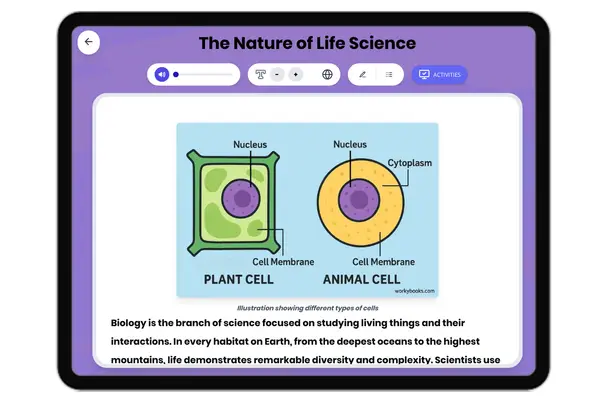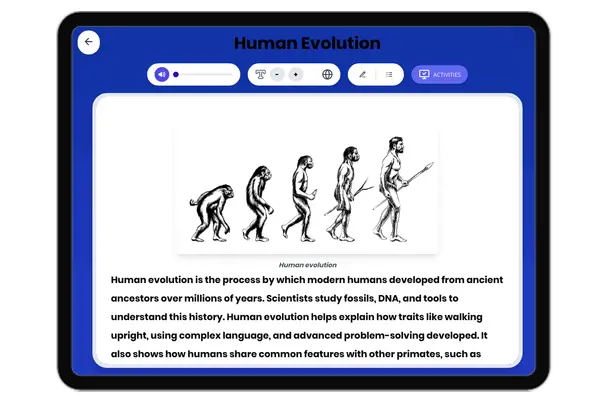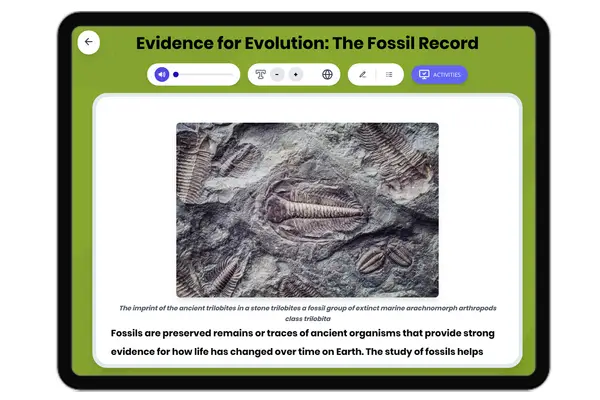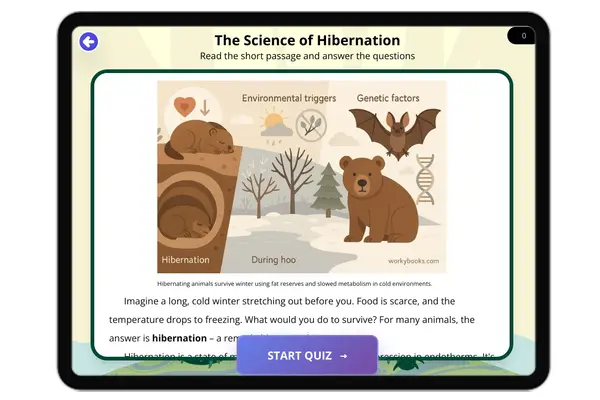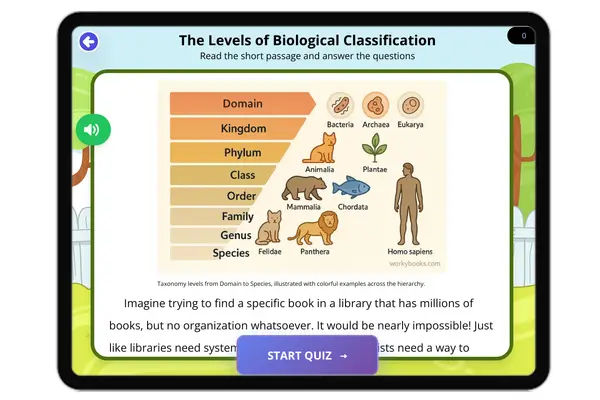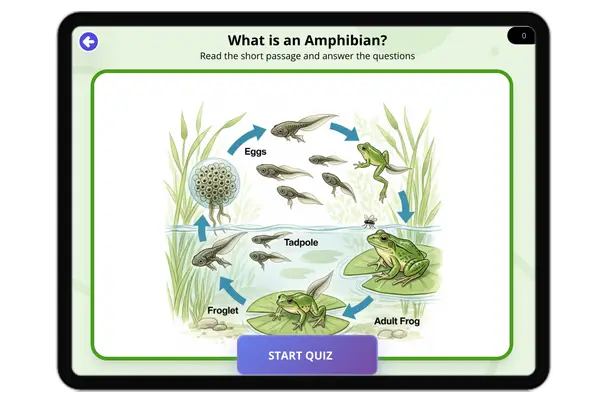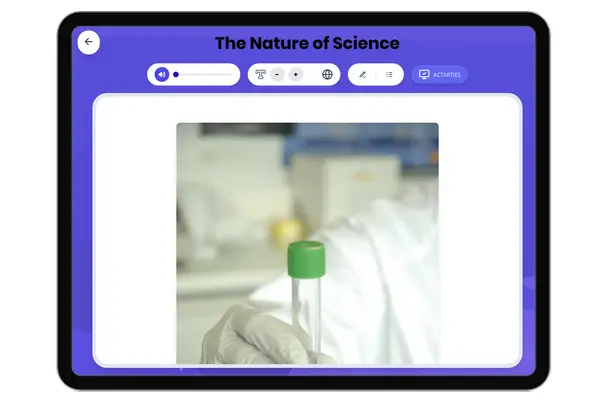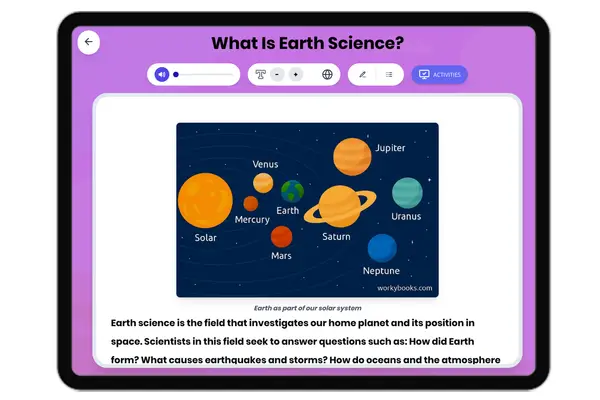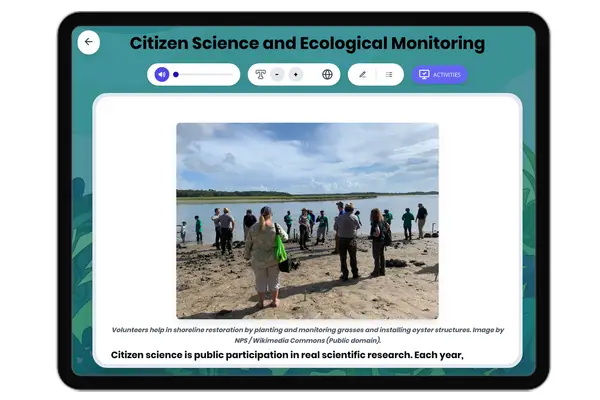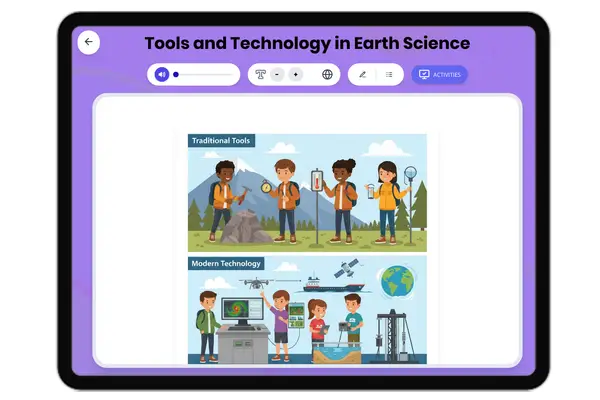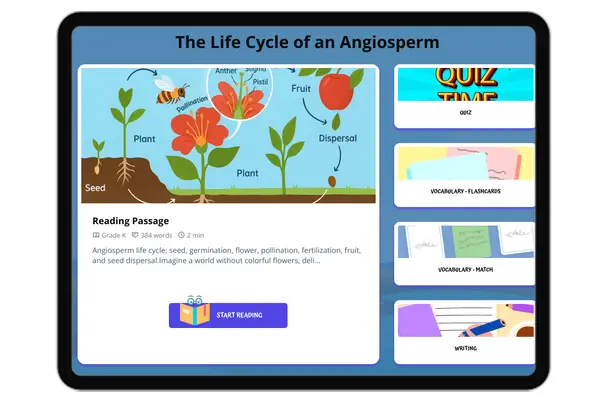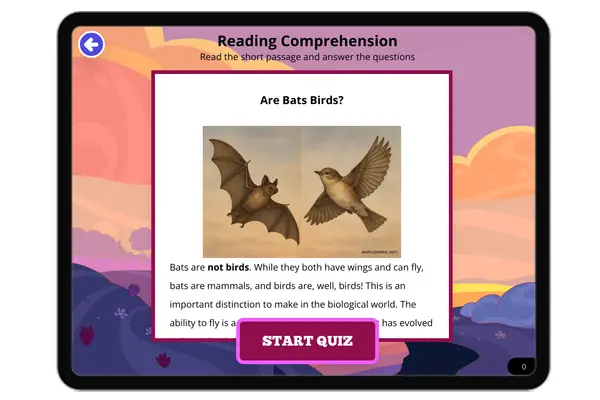Fossil Evidence of Human Evolution — Reading Comprehension
Premium Resource
Grades
- 6
PRINT+DIGITAL RESOURCE
This learning resource is available in interactive and printable formats. The interactive worksheet can be played online and assigned to students. The Printable PDF version can be downloaded and printed for completion by hand.
About This Reader
This engaging, audio-integrated reading passage, 'Fossil Evidence of Human Evolution,' introduces Grade 6 students to the fascinating world of human origins. Aligned with NGSS MS-LS4-1, it explores how scientists use fossil records to understand the existence, diversity, and change of life forms, focusing specifically on our ancient human ancestors. Students will learn about key discoveries, such as 'Lucy,' and how these fossils provide crucial data for understanding the patterns of human evolution. The passage defines important terms like 'hominids' and 'paleoanthropology,' making complex scientific concepts accessible and exciting for young learners.
Perfect For:
👩🏫 Teachers
- • Reading comprehension practice
- • Auto-graded assessments
- • Literacy skill development
👨👩👧👦 Parents
- • Reading practice at home
- • Comprehension improvement
- • Educational reading time
🏠 Homeschoolers
- • Reading curriculum support
- • Independent reading practice
- • Progress monitoring
Reading Features:
📖
Reading Passage
Engaging fiction or nonfiction text
❓
Comprehension Quiz
Auto-graded questions
📊
Instant Feedback
Immediate results and scoring
📄
Printable Version
Download for offline reading
🔊
Read Aloud
Voice-over with word highlighting



